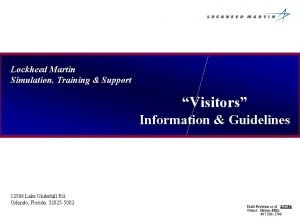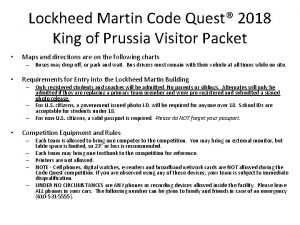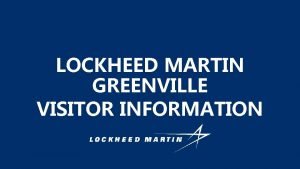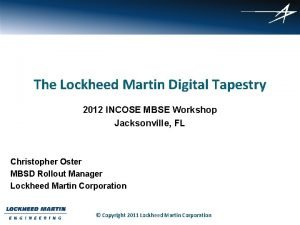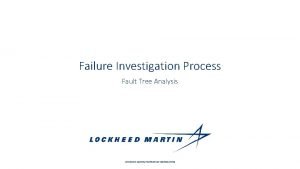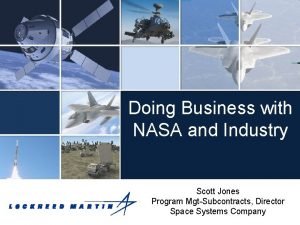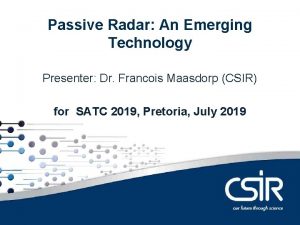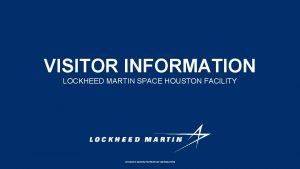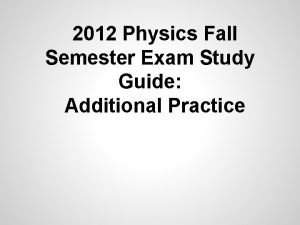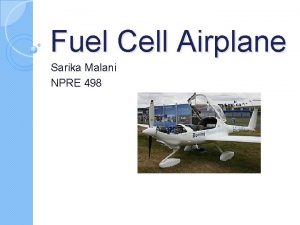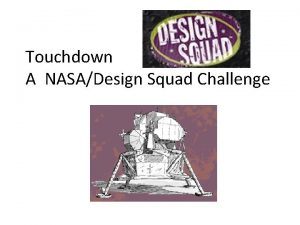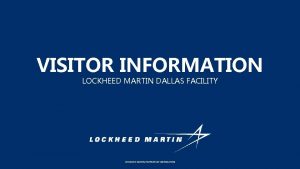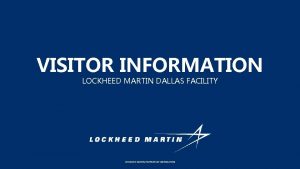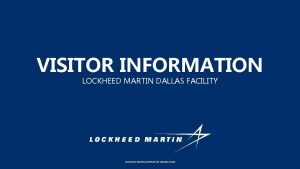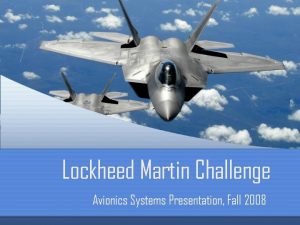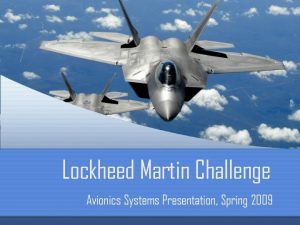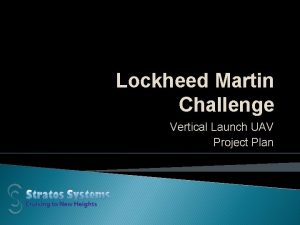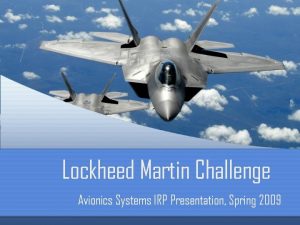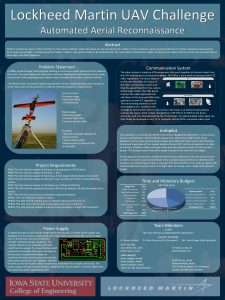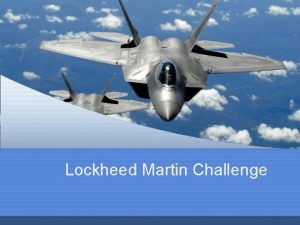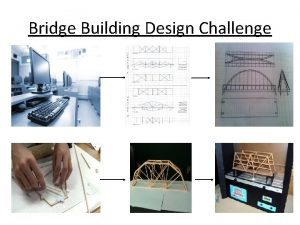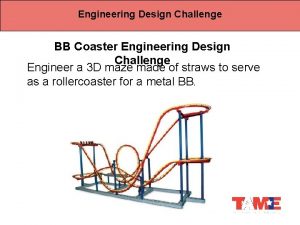Lockheed Martin Challenge Design Review Fall 2009 Lockheed































- Slides: 31

Lockheed Martin Challenge Design Review, Fall 2009

Lockheed Martin Challenge CLIENT Cory Tallman of the Lockheed Martin Corporation FACULTY ADVISORS Dr. Steve Holland Dr. Peter Sherman TEAM MEMBERS • Jason Ekstrand • Tyler Fast • Peter Hodgell • Timothy Jacobs • Daniel Jason • Matt Krajewski • Jordan Lee • Aidan Rinehart • David Snyder • Matt Stemper • Scott Strong • Eric Villhauer

Problem Statement – Problem Statement Current UAV technology is not capable of launching vertically using a rail launch system into the atmosphere. As such, current UAV’s are not suitable for use for urban operations as they must be launched away from the urban setting due to obstacles. This presents problems for certain missions that could be assisted by UAV technology.

Need Statement – Need Statement The Iowa State LM Challenge Team has been asked to design an unmanned autonomous aerial vehicle to take off from a vertical, or near‐vertical pneumatic launch system, within the confines of an urban environment. This vehicle will be used to fly low altitude reconnaissance missions and will be retrieved using a standard belly landing outside the target environment.

Lockheed Martin Challenge

Block Diagram

Operating Environment and Use • • Urban environment Heat Controlled by soldier with limited experience Fly autonomous and transmit video

Requirements -Functional Requirements FR 01 ‐ Be capable of autonomously navigating an aircraft using pre ‐programmed waypoint navigation FR 02 ‐ Support communication with a ground station to display telemetry and position data FR 03 ‐ Shall provide real ‐time video to ground station FR 04 ‐ Shall operate in an urban environment FR 05 ‐ Shall be capable of resolving a 6 inch target from an altitude of 100 feet FR 06 ‐ Shall be a fixed ‐position camera FR 07 ‐ Shall be designed to enable a modular payload system FR 08 – Shall be designed to utilize a pneumatically ‐powered vertical launch method FR 09 – Shall be capable of operating at least one mile from the ground station -Non-Functional Requirements NFR 01 ‐ Operate off of 5 or 12 V to simplify power system NFR 02 ‐ User‐programmable to aid in support of vertical pneumatic launch NFR 03 ‐ Small size, weight, power requirements NFR 04 ‐ Video transmission shall not occur in the 900 MHz band to prevent interference with autopilot communication NFR 05 ‐ Components should utilize 5 V or 12 V when possible to simplify power requirements and increase modularity of design

Deliverables • UAV capable of a vertical launch and flight at an altitude of 100 feet and a speed of about 50 knots • Flight control system capable of navigating and piloting the UAV autonomously with a manual override mode • Video system which transmits live in‐flight video to a base station where a human could identify a large firearm 100 feet away from the camera • A ground station capable of sending commands to the aircraft, displaying video, and displaying aircraft flight status and telemetry

Risks/Mitigation • Cannot tune autopilot via trial and error method • Create SIMULINK model • Cannot perform flight tests due to lack of experienced pilot • Have multiple pilots on team • Licensed radio operator not available • Have multiple team members certified • Plane damaged in crash • Have 3 planes for use in test flights • Loss of radio signal • Autopilot will fly back to point of origin

Video Transmission System • • Design Considerations Last Year’s System Choice of Frequency Choice of Transmitter Choice of Antennas Meeting FCC Regulations Entire System Layout Plans for Testing

Video Transmission System Last Year’s System: • • Transmitted on 2. 4 GHz at 1 watt Could not reach the full 1 mile Highly prone to interference Did not meet FCC regulations for ATV

Video Transmission System Choice of Frequency (440 Mhz): • 900 MHz band was already used by the Autopilot system and the remote control • 2. 4 GHz and 5. 8 GHz bands are limited to 1 watt • High frequency bands are prone to interference • 440 MHz is a common Amateur Television (ATV) band • FCC allows transmit power of up to 50 watts on 440 MHz

Video Transmission System Choice of Transmitter (2 watt): • Higher power means more range • Power consumption was less of an issue because of new power system • 4 watt transmitters require large heat sinks that could weigh up to a pound • 2 watts was decided to be the best balance between weight and power

Video Transmission System Choice of Antennas: • Antennas have an inherent gain vs. directionality tradeoff • The plane provides little space and adjustment of antenna direction – Half‐wave dipole is low gain but close to omni‐directional – Half‐wave dipole is easy to construct and mount in wing • The ground station provides much more freedom for direction and space – Yagi‐Uda antenna is much higher gain but directional – Someone on the ground can point the antenna

Video Transmission System Meeting FCC Regulations: • FCC requires Technician level Amateur Radio License • FCC requires transmission of call sign every 10 minutes and at end of transmission • Purchased an On Screen Display (OSD) board to broadcast the call sign of the operator

Video Transmission System

Video Transmission System Plans for Testing: 1. Test with just video transmitter and computer TV capture card 2. Test with just video transmitter and down‐converter 3. Test with down‐converter and IF converter 4. Full system test: – – – Range tests (transmitter and receiver placed at different distances) Interference tests (transmitter and receiver placed across buildings) Tests performed with various antenna design iterations

Power System Last Year’s System: • The DC‐DC converter is fed by the avionics battery and supplies appropriate voltages to on‐board avionics equipment (5 V and 12 V). • 1400 m. Ah Ni. Cad Battery • Weight = 156 g+183 g+30 g=369 g • Approx run time = 30 Minutes It was determined that this setup does not meet the functional requirements of this project as increasing the battery to meet the one hour requirement would add too much weight.

Power System New System Design: Two switching regulators are used to supply both 11 V and 5 V to the desired systems. 16 14 12 Last 10 minutes ( after 134 minutes of constant output voltages) 10 battery 8 6 5 V 4 2 11 v 0 0 200 400 600 Time(s) Voltage LMC SYSTEM LOAD TEST • 2350 m. Ah 14. 8 V Lipoly Battery • Weight = 262 g+32 g = 294 g • Approx run time = 2. 15 Hours

Autopilot Capabilities This model from Micro. Pilot includes ground station software (Horizon), can handle up to 1000 waypoints with in-flight modification possible (FR 01), and is capable of controlling up to 24 servos simultaneously. The on-board GPS updates at a rate of 4 Hz. Specifications • Micro. Pilot Model 2128 • Weight: 28 g • Dimensions: 100 (L) x 40 (W) x 15 (H) mm • Power Requirements: 140 m. A at 6. 5 VDC • Supply Voltage: 4. 2 -26 VDC Sensors The 2128 provides support for airspeed (up to 500 kph), altimeter (up to 12, 000 MSL), IMU (3 -axis rate gyro/accelerometers), and GPS. The accelerometers saturate at 4 G’s. Purchase of New Radio In case of loss of radio signal to the ground station, the current autopilot configuration is not compatible with the radio controller presets and does not allow for the UAV to return on a set path through the autopilot. In order for the flight to be completely autonomous in the event of a signal loss, a new radio system will need to selected, purchased and installed.

HORIZON Software Package

Autopilot (Orbit a point)

Autopilot (Orbit a point) The center point of the aircraft’s intended circle (black), the 4 waypoints defining the flight path (red), the flight path (blue), the radius of the actual circle (R), the threshold radius of the airspace surrounding each waypoint (2 r), and the parameter defining the distance of the four waypoints (x).

Autopilot In the event that GPS signal is lost during flight, the position of, speed of, and heading of the aircraft during its last known good GPS communication will be recorded. Using the attached 3 D compass, the autopilot will continuously record its speed, altitude, position, and heading as it attempts to make its way back to the launch area. The process of constantly recording the aircrafts speed, altitude, heading, and position is called dead reckoning.

Autopilot PIDs • Set PID gains to default values • Conduct trial and error tests • Example: – Pitch Loop Parameter • Step 1‐ attempt to have the aircraft fly at level altitude • Step 2‐ instruct it to change its pitch by varying angles and video tape the results. • Step 2‐Adjust PID parameters • Step 3‐ Retry

Resources and Schedule

Resources and Schedule

Resources and Schedule

Questions

REPORT DISCLAIMER NOTICE DISCLAIMER: This document was developed as a part of the requirements of a multidisciplinary engineering course at Iowa State University, Ames, Iowa. This document does not constitute a professional engineering design or a professional land surveying document. Although the information is intended to be accurate, the associated students, faculty, and Iowa State University make no claims, promises, or guarantees about the accuracy, completeness, quality, or adequacy of the information. The user of this document shall ensure that any such use does not violate any laws with regard to professional licensing and certification requirements. This use includes any work resulting from this student-prepared document that is required to be under the responsible charge of a licensed engineer or surveyor. This document is copyrighted by the students who produced this document and the associated faculty advisors. No part may be reproduced without the written permission of the course coordinator. Images within this presentation were obtained via the courtesy of their respective owners, listed below: Lockheed Martin Corporation Micro. Pilot
 Lockheed martin cyberquest
Lockheed martin cyberquest Lockheed martin orlando visitor center
Lockheed martin orlando visitor center Lockheed martin factory
Lockheed martin factory Code quest lockheed martin
Code quest lockheed martin Lockheed martin atlanta
Lockheed martin atlanta Lockheed martin visitor center
Lockheed martin visitor center Lockheed martin mbse
Lockheed martin mbse Lockheed martin clayton
Lockheed martin clayton Fault
Fault Scott jacobsen lockheed martin
Scott jacobsen lockheed martin Silent sentry lockheed martin
Silent sentry lockheed martin Lockheed martin houston tx
Lockheed martin houston tx Lockheed martin kill chain
Lockheed martin kill chain Lockheed martin organizational chart
Lockheed martin organizational chart Rob chambers lockheed martin
Rob chambers lockheed martin Teen challenge nottingham
Teen challenge nottingham Bp statistical review of world energy 2009
Bp statistical review of world energy 2009 Physics fall final exam review
Physics fall final exam review Physics fall semester exam review
Physics fall semester exam review Semester 1 final exam study guide us history
Semester 1 final exam study guide us history English 3 fall semester exam review
English 3 fall semester exam review Verbal irony def
Verbal irony def World history semester exam
World history semester exam World history fall final review answers
World history fall final review answers Lockheed cl-400 suntan
Lockheed cl-400 suntan Lockheed tristar and capital budgeting solution
Lockheed tristar and capital budgeting solution Thaad lockheed
Thaad lockheed Thaad lockheed
Thaad lockheed Nasa design squad challenge touchdown
Nasa design squad challenge touchdown Front view drawing
Front view drawing What is the fundamental challenge of dashboard design
What is the fundamental challenge of dashboard design The hand warmer design challenge
The hand warmer design challenge

